
François Auguste René Rodin was a French sculptor generally considered the founder of modern sculpture. He was schooled traditionally and took a craftsman-like approach to his work. Rodin possessed a unique ability to model a complex, turbulent, and deeply pocketed surface in clay. He is known for such sculptures as The Thinker, Monument to Balzac, The Kiss, The Burghers of Calais, and The Gates of Hell.

Lee Oscar Lawrie was an American architectural sculptor and an important figure in the American sculpture scene preceding World War II. Over his long career of more than 300 commissions Lawrie's style evolved through Modern Gothic, to Beaux-Arts, Classicism, and, finally, into Moderne or Art Deco.

Jonathan Mayhew Wainwright IV was an American army general and the Commander of Allied forces in the Philippines at the time Japan surrendered to the United States, during World War II.
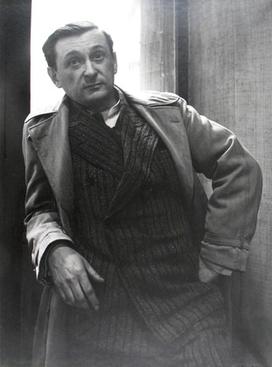
Jacques Lipchitz was a Cubist sculptor. Lipchitz retained highly figurative and legible components in his work leading up to 1915–16, after which naturalist and descriptive elements were muted, dominated by a synthetic style of Crystal Cubism. In 1920 Lipchitz held his first solo exhibition, at Léonce Rosenberg's Galerie L'Effort Moderne in Paris where he was counted as part of the School of Paris. Fleeing the Nazis he moved to the US and settled in New York City and eventually Hastings-on-Hudson.

Rufus McGarrigle Wainwright is a Canadian-American singer, songwriter, and composer. He has recorded eleven studio albums and numerous tracks on compilations and film soundtracks. He has also written two classical operas and set Shakespeare's sonnets to music for a theatre piece by Robert Wilson.

Adolph Alexander Weinman was a German-born American sculptor and architectural sculptor.

Daniel Todd Patterson was an officer in the United States Navy during the Quasi-War with France, the First Barbary War, and the War of 1812.

Clark Mills was an American sculptor, best known for four versions of an equestrian statue of Andrew Jackson, located in Washington, D.C., with replicas in Nashville, Tennessee, Jacksonville, Florida, and New Orleans, Louisiana.

Edward Virginius Valentine was an American sculptor from Richmond, Virginia.
Donald Harcourt De Lue was an American sculptor, best known for his public monuments.
Charles Shiels Wainwright was a produce farmer in the state of New York and an artillery officer in the Union Army during the American Civil War. He played an important role in the defense of Cemetery Hill during the July 1863 Battle of Gettysburg, where his artillery helped repel a Confederate attack. His extensive diary kept during the war is considered to be among the finest such documents from the Civil War period.
Lindsay Daen (1923–2001), was a New Zealand sculptor and artist who worked and resided in Puerto Rico. Daen created landmark sculptures in Puerto Rico, Australia and the United States. He was a member of the Royal Art Society in Sydney, whose art work was exhibited worldwide.

Stephen De Staebler was an American sculptor, printmaker, and educator, he was best recognized for his work in clay and bronze. Totemic and fragmented in form, De Staebler's figurative sculptures call forth the many contingencies of the human condition, such as resiliency and fragility, growth and decay, earthly boundedness and the possibility for spiritual transcendence. An important figure in the California Clay Movement, he is credited with "sustaining the figurative tradition in post-World War II decades when the relevance and even possibility of embracing the human figure seemed problematic at best."
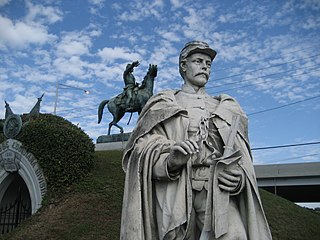
Alexander Doyle (1857–1922) was an American sculptor.
Paul Fjelde was a noted American sculptor and educator.
Angela Gregory was an American sculptor and professor of art. Gregory has been called the "doyenne of Louisiana sculpture". She became one of the few women of her era to be recognized nationally in a field generally dominated by men.

John Tarrell Scott was an American sculptor, painter, printmaker, collagist, and MacArthur Fellow. The works of Scott meld abstraction with contemporary techniques infused with references to traditional African arts and Panafrican themes.
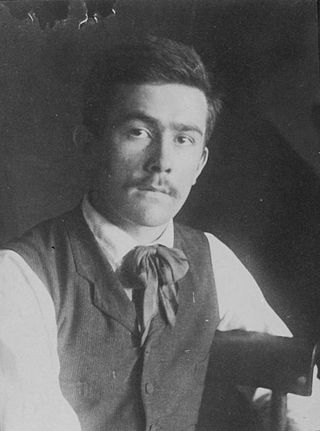
Samuel Aloysius Murray was an American sculptor, educator, and protégé of the painter Thomas Eakins.
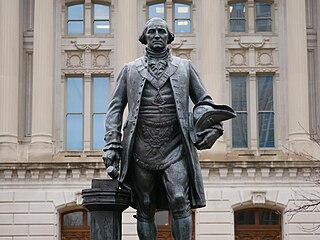
George Washington is a public artwork by American sculptor Donald De Lue, located on the grounds of the Indiana Statehouse, in Indianapolis, Indiana, United States. The bronze statue of George Washington that occupies the Indiana Statehouse south lawn is one of several copies of a 1959 original wax cast at the Modern Art Foundry in Long Island, New York.
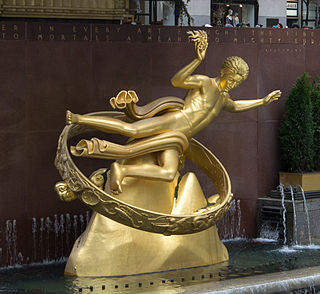
Prometheus is a 1934 gilded, cast bronze sculpture by Paul Manship, located above the lower plaza at Rockefeller Center in Manhattan, New York City.













